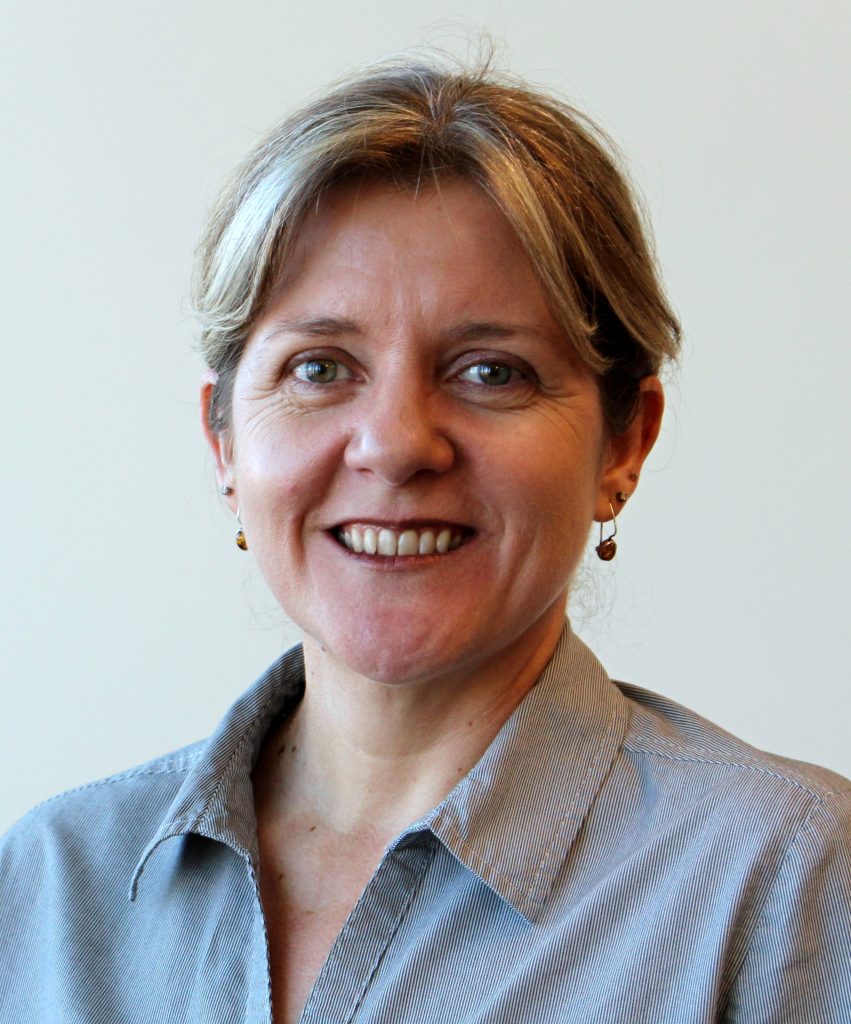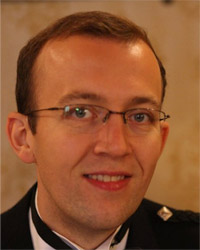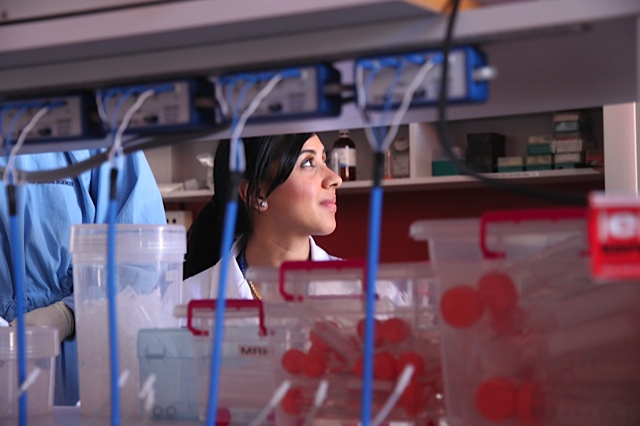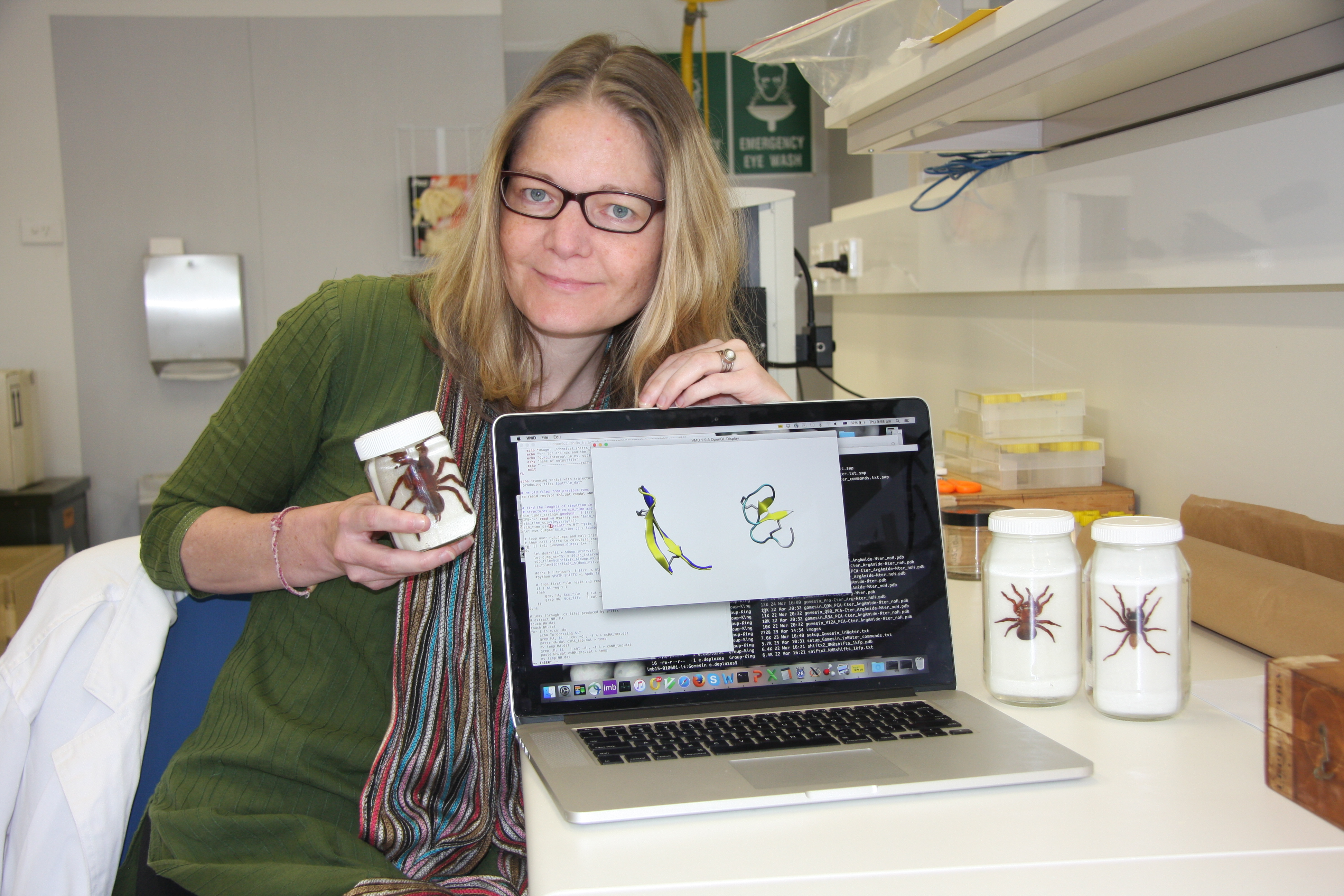The gender gap in science is real, and closing it will capitalise on national investment to diversify the scientific workforce and benefit Australia’s health and economy.
Can You Name a Woman in Science?
A 2014 YouGov poll in the United Kingdom found that more than half (54%) of the people polled could not name a woman in science. Even when scientists think about women in science, famous and high-profile women such as Marie Curie typically first come to mind.
Marie Curie (1867–1934) was a physicist and chemist who conducted pioneering work in radioactivity. She was the first female professor at the University of Paris, and won the highest accolade possible in science – the Nobel Prize – not once but twice, the first person ever to do this. Curie jointly received the first Nobel Prize (in Physics) in 1903 with her husband Pierre Curie and Henri Becquerel, and was the sole recipient of the 1911 Nobel Prize in Chemistry. However, even she battled both sexism and xenophobia during her life.
Australian physicist Ruby Payne-Scott (1912–1981) was a less well-known woman in science. As Australia’s first female radio astronomer, Payne-Scott worked at the CSIRO and made seminal contributions that led to the development of the radio telescope. In the early 1950s, the Act under which the CSIRO operated required women to resign if they were married. When Payne-Scott was asked to resign her position, she wrote to the CSIRO Executive, stating:
“… the present procedure with regard to married women … seems to go far beyond the simple statement in the Act … the present procedure is ridiculous and can lead to ridiculous results.”
Beyond the Ridiculous
The tale of Ruby Payne-Scott seems archaic in the 21st century, and yet many of the challenges faced by women in science today remain the same as those in the 1950s. In 2009, the Women in Science in Australia report showed that despite over half of the students studying science being female, numbers drop sharply as they climb the career ladder. Typically, a quarter of our junior independent researchers (senior lecturers or assistant professors) are women but this plummets to 10–15% at the highest academic level (professor). Interestingly, even though the starting numbers vary for different scientific disciplines (e.g. engineering and mathematics are male-dominated disciplines, even at the undergraduate level), this compelling inverse relationship dominates across the board.
A survey of 1300 postdoctoral fellows at the National Institutes of Health in the USA found that while ~70% of male postdoctoral fellows wanted to pursue an independent research career, only about half of their female counterparts wanted to (EMBO Reports 2007, 8: 977–981). This was regardless of whether the postdoctoral fellows were single or married, with or without children. Independent research was considered an unattractive career that was highly competitive with long hours and a demanding lifestyle. The Australian Council of the Learned Academies (ACOLA) reported in 2012 in Career Support for Researchers that women scientists in Australia also flagged a lack of work–life balance in the research career, and stated that they felt confronted with the choice between career and family.
The Australian Academy of Science champions scientific excellence in Australia, and its Fellowship encompasses our most eminent scientists. Each year the Academy elects approximately 20 new Fellows. In 2013, of the almost 500 living Fellows of the Academy, 92% were men and only 8% were women, said the Walter and Eliza Hall Institute’s Douglas Hilton in his discussion on Australian female science fellows published in Nature that year. In that same year, to the surprise of the scientific community, none of the newly appointed Fellows were women. In 2014, however, almost half of the 21 Fellows appointed to the Academy were women.
Why a Dearth of Women in Science at the Top?
The reasons for the low numbers of senior women in science are several, and this concerning trend is set to continue if changes are not introduced.
Women Are from Venus
The physical differences between men and women are usually clear, but a very recent neuroimaging study by Larry Cahill at the Department of Neurobiology and Behavior, University of California, found that our brains may be “wired” differently (Proc. Natl. Acad. Sci. USA 2014, 111: 823–8). The study discovered that female brains have increased inter-hemisphere neural connections, which facilitate socialisation, multitasking and memory skills, while male brains have increased neural communication within hemispheres, fostering perception and coordinated action. Whether these differences are due to gender, socialisation or both is a matter of debate, but it is generally agreed that women tend to be more collaborative and less self-promoting than men.
“Impostor syndrome” was first used in 1978 (Psychotherapy: Theory, Research and Practice) to describe women with significant self-doubt about their professional success. Though not recognised as a medical condition, impostor syndrome is common among high achievers of both sexes. Individuals feel like a “fraud” whose talents and achievements have been over-estimated, and they expect to be “caught out”. Impostor syndrome is experienced by men and women, but is considered a particular challenge for women in academic science.
Gender Bias Is Real
In a 2012 study (Proc. Natl. Acad. Sci. USA 2012, 109: 16474–9), Yale University researchers asked 127 professors in biology, chemistry and physics to review a postgraduate student’s application for a laboratory manager position. Each professor received the same application with only the name and gender changed. Half of the professors received a “male” application while the other half received a “female” application. Both male and female professors scored the female applicant lower than the male, and also offered the female applicant a lower salary, despite having the same
qualifications. These results sent shock waves through the scientific community, leading to avid discussions about discrimination and unconscious bias against women in science.
Disruptions Early in a Research Career Can Have a Whole-of-Career Impact
Establishing an independent research career in science typically coincides with an equally demanding stage of life – the ages of 30–40 years. This is when many young investigators are buying their first home, getting married, welcoming their first child, experiencing health issues or caring for an ageing parent. Balancing childbearing/rearing with doing research, supervising students, writing papers, speaking at international conferences, peer review and committee service can be especially challenging for women because they are usually the primary caregiver. Society currently conditions us that men are the main breadwinners of the family and women are the carers and nurturers, which means that both men and women find breaking out of predefined roles difficult.
A career disruption early in the career of a young woman in science has a whole-of-career impact. The 2009 Women in Science in Australia study, led by Sharon Bell and published by FASTS (now Science and Technology Australia), emphasised that if a woman scientist has a career break (e.g. to have a child) there will be a lag phase in her track record, which is primarily assessed by publications and grants. This will negatively impact on her ability to obtain funding in the next grant round, which can have a knock-on effect as both work and family responsibilities increase over time. In fact, the 2012 Association for Women in Science survey of more than 4000 researchers worldwide found that 40% of female respondents had delayed having a child because of their career.
We must remove any stigma attached to equal sharing and/or swapping of parenting roles. Women who have established successful careers often want to stay “on track” professionally while parenting. Many fathers today want to be hands-on dads, and some prefer to care for their children full-time. It is important to note that men in science who take parental leave, are primary caregivers or endeavour to equally share parenting duties can experience similar challenges to women.
Women Leave Science at a Greater Rate than Men
The greatest attrition of young researchers occurs at the transition from postdoctoral fellow to independent researcher – and most who leave are women (EMBO Reports 2007, 8: 977–81). The loss of so many mid-career researchers and their expertise, particularly women, impacts our nation’s scientific performance and productivity. With the Department of Innovation reporting more than 4000 new PhD graduates in the science-related disciplines each year, we must endeavour to retain our best and brightest in research.
What Are the Solutions?
It important to consider viable solutions at three different levels.
The Individual
Each of us must be aware of the issues facing women in science and of our own unconscious biases. Participating in staff training, serving on gender equity committees and attending women in research events help keep us informed. This is particularly important for staff serving on selection and/or promotion committees. We must ask about the workplace support available, such as teleconferencing, flexible hours, working from home and family-friendly meeting times.
Technical assistance during a career disruption or a larger room for conference travel (to accommodate a child/carer) may be available. We must identify mentors, both senior investigator and peer mentors. Importantly, we must be good mentors and engage with students through lectures, social media, school events and mentoring programs. Robogals, founded by Marita Cheng, 2012 Young Australian of the Year, encourages girls to consider careers in science, technology, engineering and maths. Nalini Joshi, Maths Professor at the University of Sydney and Australian Research Council (ARC) Laureate Fellow, sees a need for such encouragement:
“To have been told I can’t explore this vast mathematical landscape because I’m a woman ignores the fact there are deep, entrenched problems, for which we need the talents of everyone.”
The Institute
On International Women’s Day 2013, the Australian Early- and Mid-Career Researcher Forum released Gender Equity: Current Issues, Best Practice and New Ideas. While outlining the current issues, these guidelines highlighted key gender equity initiatives from two of Australia’s leading research organisations: the Walter and Eliza Hall Institute of Medical Research and Monash University. Both organisations have established gender equity committees, provide competitive funds to assist with child care and conference travel, and have fellowship opportunities and flexible working options for women.
Other institutional strategies include unconscious bias training, mentoring (to overcome impostor syndrome, increase confidence, strategic planning and grant writing skills), “women in science” seminars to facilitate networking, and promoting women scientists as speakers, collaborators and grant reviewers. Life science organisation EMBO has established a Women in Life Science database to promote female scientists internationally. Many organisations have established policies requiring a certain number of women on committees. Although an excellent initiative, this can place more pressure on the few women in a department.
At a National Level
At a national level there is strong support for developing initiatives to train and retain women in science. Australia’s government funding bodies for science – the National Health and Medical Research Council (NHMRC) and the Australian Research Council – have both introduced greater flexibility into their fellowship programs, including part-time fellowships and parental leave support. They are also encouraging assessors to evaluate grant applications “relative to opportunity” more effectively. The NHMRC has established the Women in Health Science working group to inform policy development.
The funding bodies generally support mentoring for all researchers, particularly women in science, but they could consider going even further to require all administering institutions to have a gender equity committee. The Athena SWAN Charter is a national program established in the UK that recognises and rewards organisations that support women in research. Research organisations in the UK must now provide evidence of their gender equity initiatives when applying for public funding and can include endorsement by the Charter.
No Easy Fix
Setting quotas on the percentage of women employed in science is often proposed as an “easy fix” to the issue. The introduction of such a quota can be highly contentious for many men and women in the profession. Women often state they want to be selected because of their qualifications and track record, not just because they are women. Men often state that women will have an unfair advantage in the context of quotas. An appealing option is to have quotas set for the candidates that are considered for certain roles – to ensure both men and women are shortlisted, but then the best person for the job is selected. Like any major policy change, the advantages and disadvantages, the evidence for and against, and the different viewpoints need to be openly discussed and reasonably considered.
In the USA, to facilitate the development of evidence-based policies at research organisations and in government, the Gender Innovations project was initiated at Stanford University by the European Commission and the US National Science Foundation. This has developed a peer reviewed website with six interactive portals that provide unbiased scientific methods, case studies, researcher checklists, policy recommendations (including support information) and access to the latest literature published in these different areas.
Gender imbalance at senior levels is an issue faced by other professional sectors, not just science and research. Women in the corporate sector grapple with similar issues. For example, in Australia they make up about only 18% of ASX 200 Board directors. We must remember too that countries other than Australia experience these challenges. The data clearly show that much more underlies the complexity of gender equity in science than just having children. Impostor syndrome, unconscious bias and discrimination each play a role and can be addressed.
It Is About All of Us
Australia has entered the post-mining boom era. Science, technology and innovation are vital to our nation’s future health, economy and security. Increasing the percentage of women in science will ensure our research workforce represents our society. Brian Schmidt, who is a Distinguished Professor in Astronomy at the Australian National University, a Physics Nobel Laureate and an ARC Laureate Fellow, says:
“Australian science can ill-afford to lose a substantial fraction of half of our talent pool if we want to be at the international forefront of research …”
According to the Chief Scientist’s 2012 Health of Australian Science report, from 2002–10 Australia witnessed a steady decline not only in the number of students electing to study science in their senior years at high school, but also in the number of students enrolling in undergraduate science degrees at university. Successful women in science are vital as role models if we are to increase the participation of young women in science, especially indigenous girls, girls of different ethnicities, and girls in rural and regional Australia. Jenny Martin, Crystallography Professor at the Institute for Molecular Bioscience, University of Queensland and ARC Laureate Fellow, describes the value of female role models in her career path:
“Crystallography has a long history of female pioneers and I was surrounded by amazing female role models. It was at this point I realised that being a woman and succeeding in science were not mutually exclusive.”
Men are now speaking out in support of gender equity in science. Scandinavian men have pledged to not speak at meetings without women on the panel (http://tackanej.se/men-say-nothanks). Terry Speed, Professor of Bioinformatics at the Walter and Eliza Hall Institute for Medical Research, and winner of the Prime Minister’s Science Prize in 2013, says:
“We must all insist on gender equity. It is not just about women, it’s about all of us.”
Many of the initiatives described will help both men and women in research. When women in science excel, we all benefit. A career in science is full of possibility. Scientists can bring curiosity and creativity to work, collaborate and engage with other scientists internationally. The public has a strong appreciation for research and the fact that Australia needs high-calibre scientists.
Our future success lies in the students of today – the next generation of scientific leaders. Students with an interest and aptitude for science and maths must be encouraged to reach their full potential and be given ample opportunities to do so. We must tell all young girls (and boys) in Australia that they too can find alternative energy solutions, design the bridges of tomorrow, explore the origins of the universe and develop treatments for incurable diseases. Australia will only thrive with a diverse range of ideas, which will stem from greater diversity in its scientific research workforce.


The authors acknowledge all members of the Australian Early- and Mid-Career Researcher Forum and Science Pathways delegates for their contributions to discussions on gender equity.
“Women in Science: Closing the Gender Gap” was first published in Issues Magazine, Volume 107, Pages 29-33 (June 2014) and edited by Sally Woollett.



Pretty nice post. I just stumbled upon your blog and wanted
to say that I have really enjoyed browsing your blog posts.
In any case I’ll be subscribing to your rss feed and I hope you write again very soon!
Very interesting article. However, were “…quotas set for the candidates that are considered for certain roles – to ensure both men and women are shortlisted, but then the best person for the job is selected” to be adopted, what would happen were a male to be selected anyway? Would it automatically be a case of “impostor syndrome, unconscious bias and discrimination”? I sincerely hope it wouldn’t come to that! I applaud work to reduce the imbalance, but I would hope we don’t see the situation where the imbalance becomes one of advantage, such as in business where women-only support networks are not reciprocated by men-only support networks, which would be terribly politically incorrect, if not considered discriminatory.
Men are not immune to discrimination and bias either, and surely just want to get on with their own work and interests without having positive discrimination being the cause of them missing out on a plumb research job?
Great article Maggie and co.